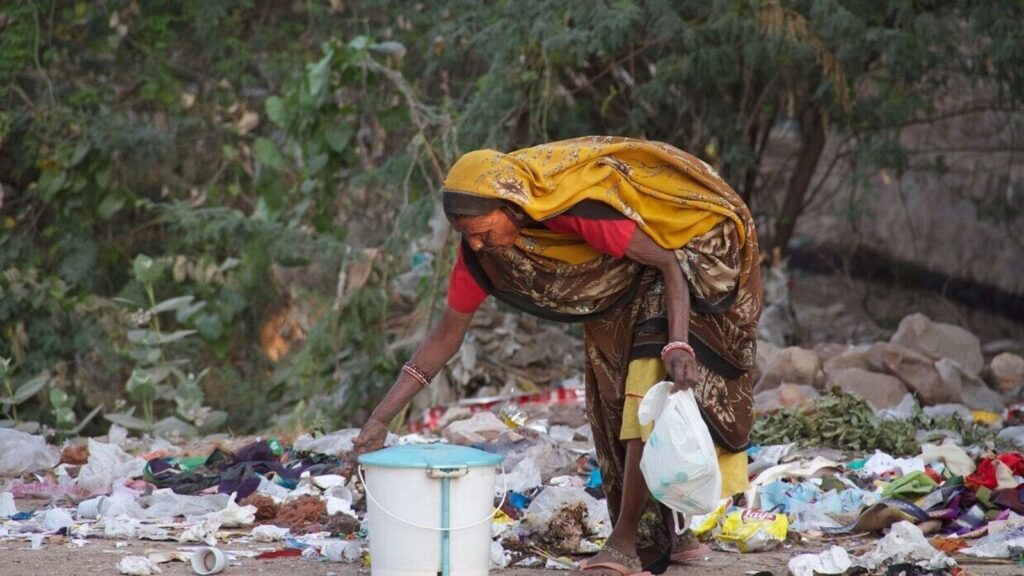PANJIM, THE capital of the Indian state of Goa, is known for its pretty churches and Indo-Portuguese homes. But 20 years ago it looked like any other Indian city: filthy. Some 1,500 community waste-collection bins overflowed with mixed rubbish. Their contents were dumped beside a nearby village, growing into a mountain of garbage. Eventually, in the monsoon of 2005, the trash-heap collapsed, sending refuse into homes. Revolted, villages revolted; the site was closed. City officials looked for another site but no one would take their waste.
Panjim today is a very different place. The city replaced its system of bins with door-to-door collection. Blocks of flats must segregate their rubbish into wet (mostly, food) waste used for compost and biogas, and 16 categories of dry, including one just for coconuts. (Goans consume five to eight coconuts per person each month; the national average is less than one.) The state has a no-landfill policy.
It took time, political will, carrots and sticks, but by 2021 99% of the waste collected in Panjim was segregated at source, 80% was processed and 90% of streets efficiently swept, according to a report by NITI Aayog, a government think-tank, and the Centre for Science and Environment (CSE), another think-tank in Delhi. A system born of crisis is today cited as an example of “best practices” for other cities to follow.
Yet these models remain isolated bright spots. Much of India is covered under a shroud of plastic bags, snack packets, drink bottles and organic and human waste. A fifth of the population has no waste collection. Piles of garbage fester at street corners and along main roads and railway tracks. The problem is becoming more urgent: urban India generated some 50m tonnes of municipal solid waste in 2021. That is likely to jump to 125m tonnes by 2031, according to CSE. “We have achieved rocket science but we are not able to achieve [a] three-bin system,” laments Shobha Raghavan of Saahas Zero Waste, a waste-management firm.
As the quantity of rubbish grows, its nature and harms are changing too. Most of India’s waste used to be organic. Now the share of non-biodegradable waste is climbing. India today has more consumer goods, and more people with more money to spend on those goods. The growth of e-commerce and food-delivery apps has led to a rising tide of packaging.
Rubbish is not just malodorous and unsightly. In cities it spreads disease and attracts vermin. In the countryside it contaminates the soil and pollutes water sources. And in many places without organised collection and processing, waste is simply burnt—or, in methane-emitting landfills, spontaneously combusts—exacerbating India’s air-pollution crisis.
Under Narendra Modi, the prime minister, India has prioritised cleanliness. In 2016 the government framed national rules for the management of solid waste, which among other things mandated waste segregation. In late 2021 Mr Modi launched a new iteration of his government’s flagship “Swachh Bharat Mission”, or “Clean India Mission”, which until then had mostly focused, with some success, on building toilets and eradicating open defecation. The newer programme’s goal is to make all Indian cities garbage-free. The central government has earmarked 365bn rupees ($4.3bn) for the effort.
A rising tide of packaging
The way to fix India’s rubbish crisis is difficult but it is not complicated. The most important element is waste-sorting by homes, offices and shops. Cities should start with modest aims, asking for wet and dry segregation, before adding categories for recyclables and sanitary waste. Simple nudges, such as collecting different types of waste on different days, can help. Efforts to educate citizens and incentivise compliance must be consistent, too.
All this requires political will. Goa was fortunate: its efforts to clean up have been supported by leaders of various political stripes. “Now for Goa, this is irreversible,” says Sanjit Rodrigues, an official who has spearheaded the state’s waste-management overhaul.
But elsewhere in India “there is no political ownership of the agenda,” says Srikanth Viswanathan of Janaagraha, an NGO. Elected officials in cities have limited power. At the level of states, politicians have little interest in something as unsexy as waste management. “I have not seen a single politician win or lose an election on the issue of garbage and sanitation,” says Ankur Bisen, the author of “Wasted”, a book about sanitation in India.
India’s biggest cities are the worst laggards. Mumbai mandated waste segregation in 2016. Today only about a quarter of its wet waste is properly sorted, says Mahendra Ananthula at Antony Waste, a firm that handles much of the city’s rubbish. For an extremely dense city, with about half its population living in slums, “that’s not a bad achievement,” he says. But nor is it something to boast about.
Instead, it is smaller cities that are leading the way on waste management. They face less interference from state leaders and there is less resistance from politicians to giving them some autonomy. They “still have the ability to do better governance and are able to do this faster and better,” says Sunita Narain, the head of CSE. Panjim and many other small cities have proved it is possible to clean up India. Until Mumbaikars and Bangaloreans demand better, they can only look on in envy.
Catch all the Business News , Breaking News Events and Latest News Updates on Live Mint. Download The Mint News App to get Daily Market Updates.
MoreLess
Source:https://www.livemint.com/news/how-to-clean-up-india-s-filthy-cities-11739343439022.html

